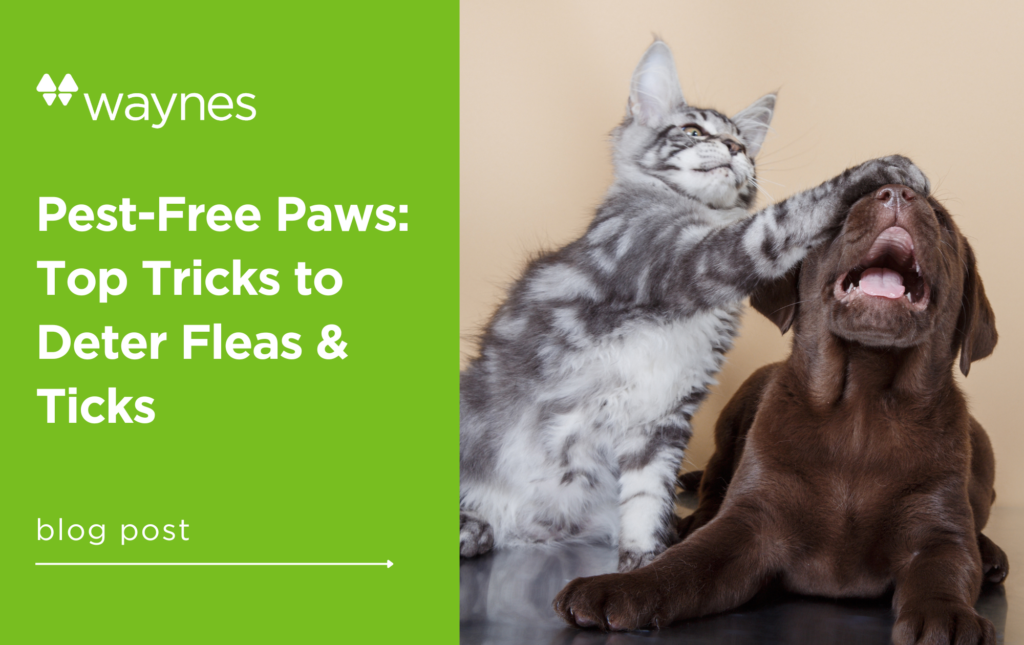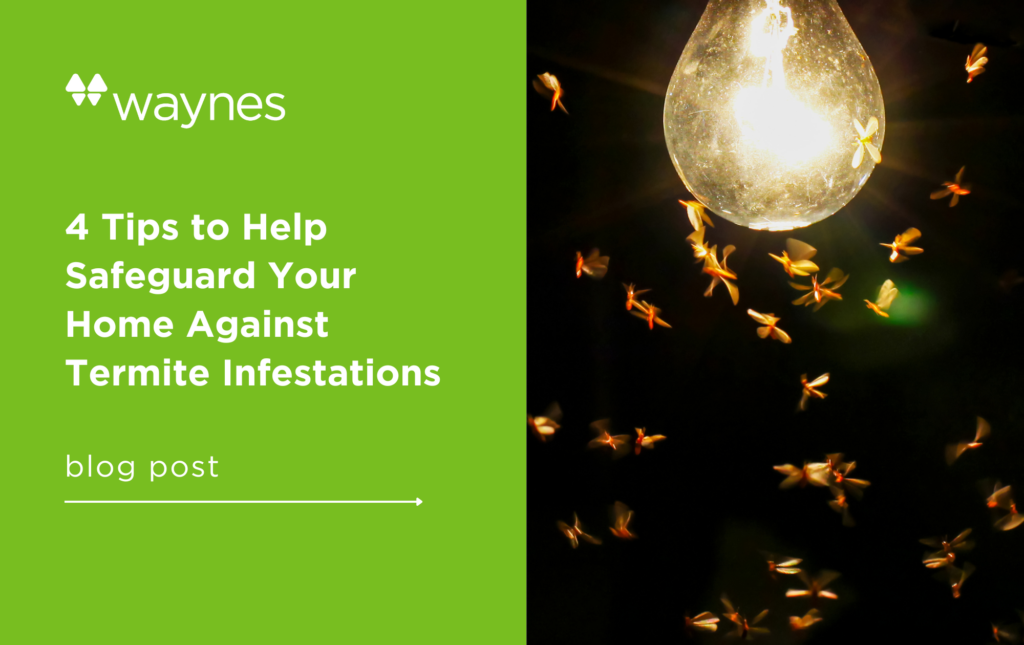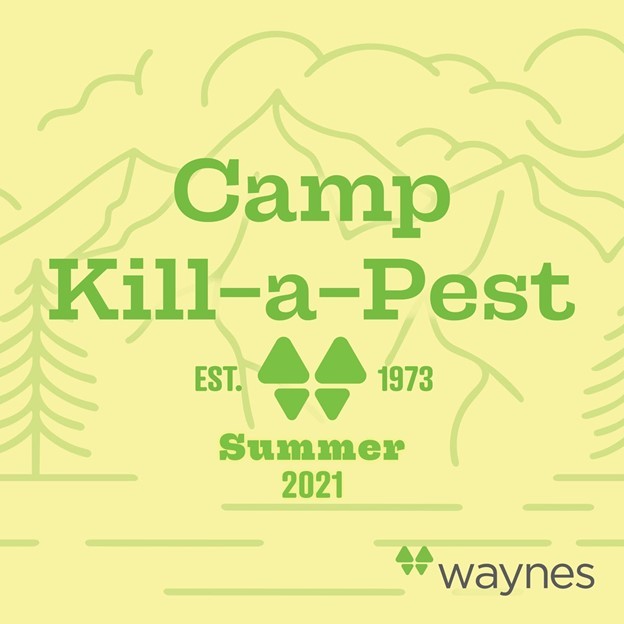It’s sad to see the green fade from your lawn as temperatures drop and your lawn goes into a dormant state for the winter. It’s only temporary, but it would be nice if we could have lush lawns 365 days out of the year.
What’s worse is noticing that there is something still alive out there on your lawn — weeds.
Unfortunately, some weeds can survive even the harshest winters (until they meet us, of course). Here are five of the most common–and toughest–winter weeds and our secrets to beating them at their own game.
Weed #1: Chickweed
Chickweed is a winter annual that can be most often found in shaded and damp areas. Its name comes from one of its early uses as a starter food for young chickens.
You can identify this weed by its small white flowers surrounded by several round green leaves. Luckily these weeds don’t grow deep and can be easily pulled out by hand. However, this is only a temporary solution.

How to Prevent & Get Rid of Chickweed
You can prevent chickweed by establishing a thick, healthy lawn before winter comes. This promotes deeper rooting and stronger grass, making it hard for chickweed to make an appearance.
Another way to prevent chickweed is to apply a pre-emergent herbicide in the spring or fall. Pre-emergent prevents these weeds from emerging on your lawn, so you never have to see them or deal with them afterward.
If chickweed has already made an appearance, all is not lost. Start by pulling up the clumps of chickweed from your lawn. You can aerate the soil around the areas where chickweed was found and apply a post-emergent weed control solution for a long-lasting fix to your chickweed problem.
Want to avoid the hassle? We can help! We provide pre-emergent, aeration, and weed control solutions.
Weed #2: Annual Bluegrass (Poa Annua)
Poa Annua, more commonly known as annual bluegrass, is another pesky weed problem common in the Southeast. This tall skinny weed usually rises several inches above your lawn. Annual bluegrass is a cool-season grass weed that starts germinating in late summer or early fall as soil temperatures start to drop.
If not addressed, bluegrass will survive the winters, and when the temperatures start to rise again, die off and leave brown patches on your lawn.

How to Prevent & Get Rid of Bluegrass
The best way to prevent bluegrass is to apply a pre-emergent in the fall. Mowing high and establishing a thick lawn will also provide non-optimal conditions for this weed.
If you already have a bluegrass problem, post-emergent spot treatments are the most effective way to get rid of these winter weeds.
Weed #3: Henbit
If you’ve seen those dark green weeds with the purple buds on top, that’s henbit. You will often find henbit in your yard under trees and shrubs where grass has a harder time growing. Henbit usually sprouts in early winter but becomes most noticeable during spring. Habit dies in the heat of summer, but only after producing seeds.
Henbit is resilient. Each plant can produce up to 2,000 seeds that will last for years and years. It’s best to go ahead and get rid of it now.

How to Prevent & Get Rid of Henbit
Like the rest of these weeds mentioned, it’s best to get ahead of these weeds by applying pre-emergent before they sprout. If you are finding henbit in areas where grass isn’t growing, such as under shrubs, applying a new layer of mulch is another way to minimize their impact.
Regularly water, mow, and fertilize your lawn to ensure there are no spare grass patches where henbit can sneak in!
Weed #4: Hairy Bittercress
Hairy bittercress is typically considered a winter annual. It germinates in the fall and seeds and flowers in the spring. Fun fact: hairy bittercress is a type of wild mustard and is perfectly safe to eat.
This weed is made up of tiny leaflets and tiny white flowers. It is also often found near chickweed.

How to Prevent & Get Rid of Hairy Bittercress
Hairy bittercress tends to be invasive, meaning this weed can quickly take over your lawn or garden. Each plant can produce 600 to 1,000 seeds and can quickly turn into hundreds of plants.
If you pull these weeds out of your yard, be sure to get all of the roots, or they can grow back. Once again, pre-emergent is your best chance to rid your yard of this invasive weed.
Weed #5: Blue-Eyed Grass
Blue-eyed grass is not grass at all — but the final weed on our list. It is technically in the iris family and sprout leaves clustered at the crown. They are most common in the Southeast and semi-dormant during the winter.

How to Prevent & Get Rid of Blue-Eyed Grass
Most of the time, a strong pull will uproot clusters of blue-eyed grass on your lawn. Since these plants don’t flower until spring, you may be able to clear these from your lawn before winter ends.
In addition to this, proper fertilization, soil pH testing, and regular mowing are the best ways to easily prevent these weeds from taking root in your yard. Broadleaf herbicides are also generally effective on this weed.
Professional Winter Weed Control
If you’re finding weeds in your yard this winter, we can help. Our post-emergent weed control solutions are safe and fast-acting so that you can prepare your dormant lawn for a healthy, green return in spring.
And we can help you get a lush lawn all year round. We provide lawn services, including fertilization, aeration, soil testing, and more, to ensure your grass stays healthy and the weeds stay out.
Contact us here or call us today at 866.WAYNES1 to find out more!









